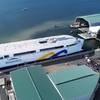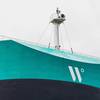Editor's Note
The complex matter of ship casualties — the causes, environmental ramifications and potential solutions — is now a top-agenda item of many organizations both inside and out of the marine world. As the number of accidents continues to grab headlines — the most recent of course being the biggest spill in the Mississippi River in 20 years, when the single-hull 83,000-ton Westchester ran aground in late November as a result of losing power due to an engine failure, spilling 13,000 barrels of sweet Nigerian crude — it is a sure bet that increased pressure will be applied by international, national and regional entities to improve safety.
It will be companies, which have a proven record of supplying advanced marine solutions who will prosper. An example of new innovation will be covered in the January 2001 propulsion edition. Litton Ship Systems and American Superconductor Corp. are collaborating on the utilization of High Temperature Superconductor technology — initially the application of HTS motors for electric ship propulsion — in order to make naval and commercial vessels more fuel efficient and quiet.










